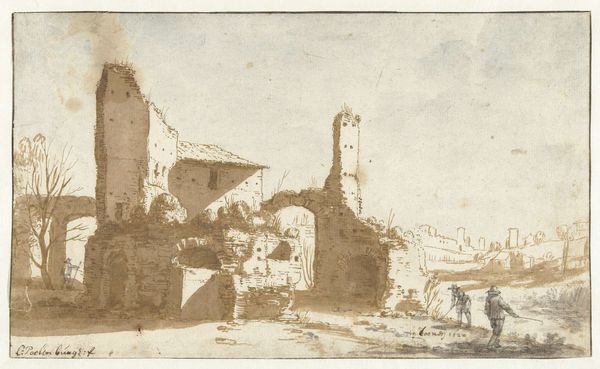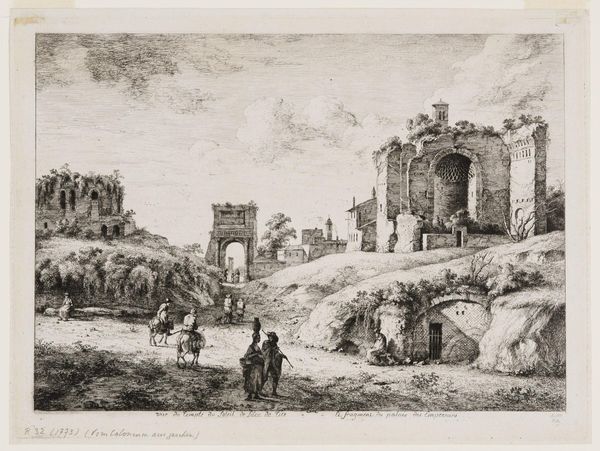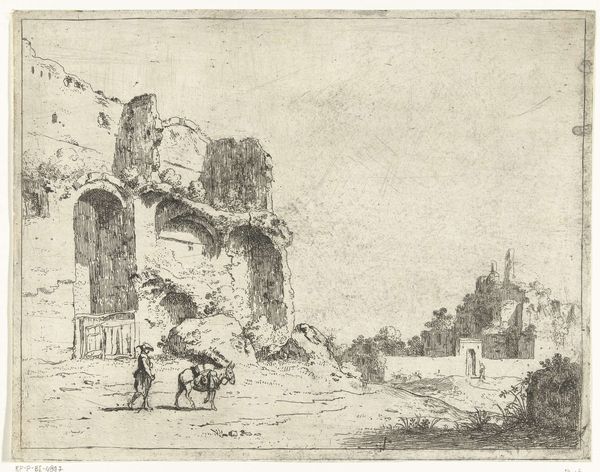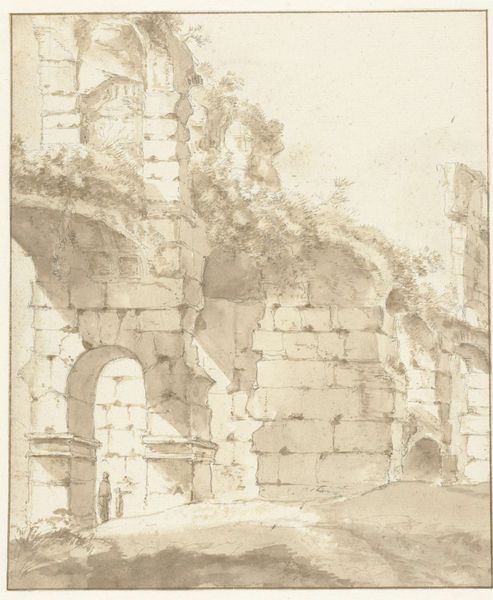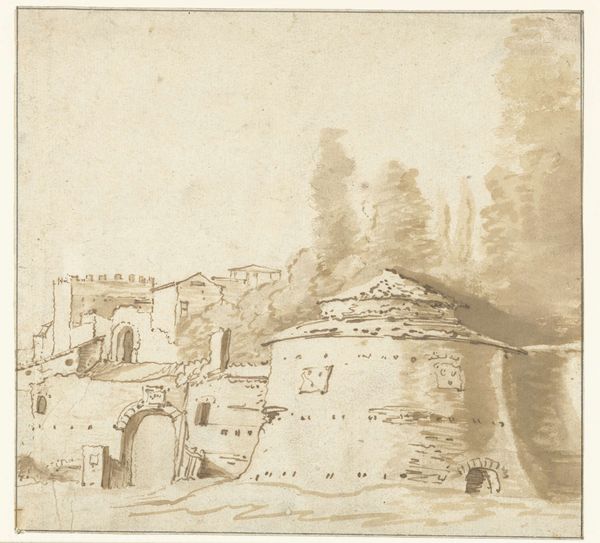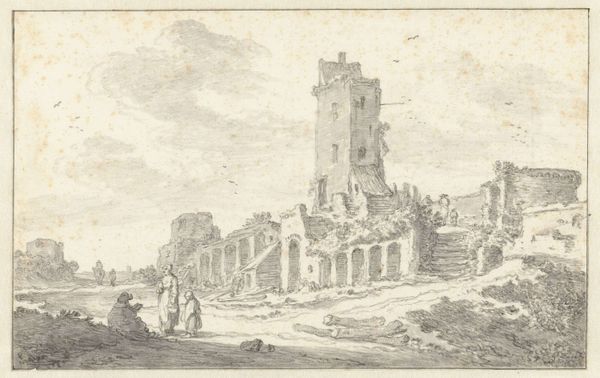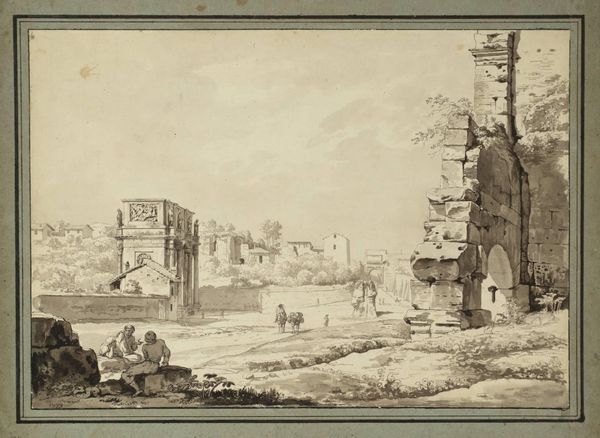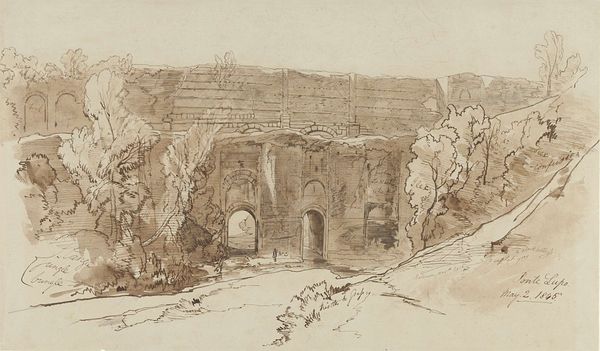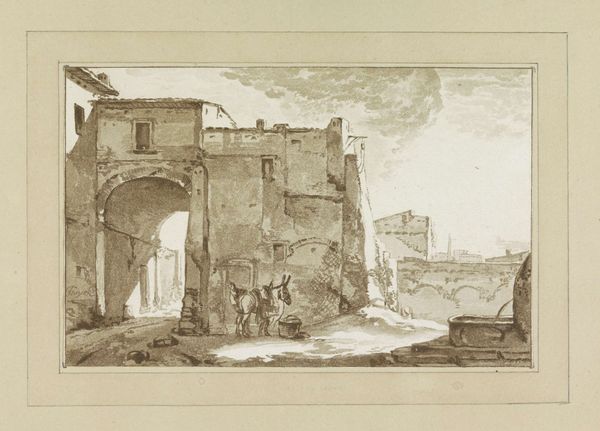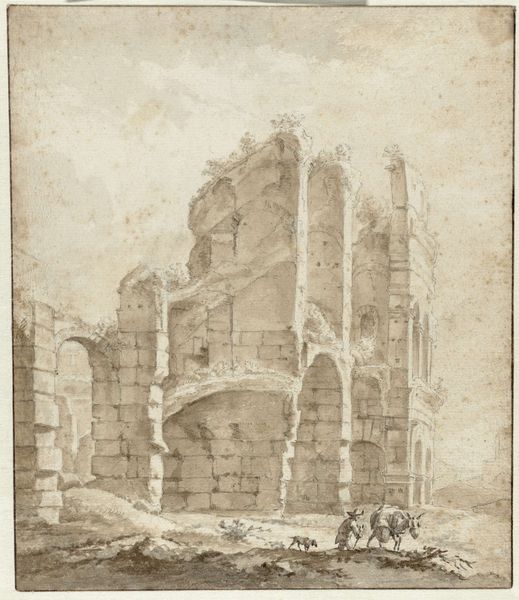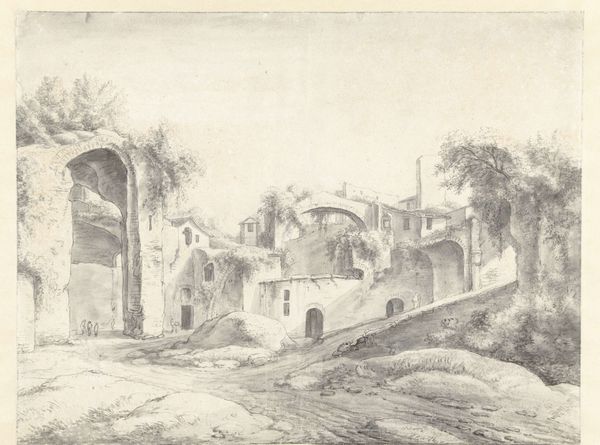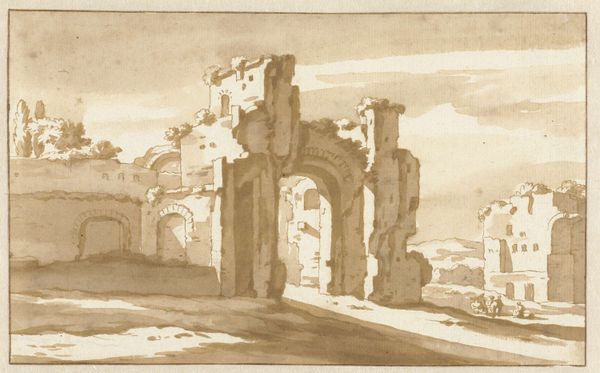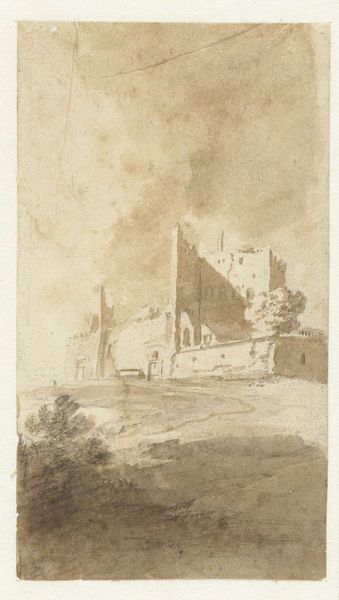
drawing, etching, paper, ink
#
drawing
#
baroque
#
etching
#
pencil sketch
#
landscape
#
etching
#
paper
#
ink
#
cityscape
#
history-painting
#
watercolor
Dimensions: height 135 mm, width 74 mm
Copyright: Rijks Museum: Open Domain
Bartholomeus Breenbergh made this brown ink drawing of the ruins of the Mezza Via aqueduct near Rome. It shows a structure that once provided fresh water to the city falling into disrepair, with a few local people wandering in the foreground. Drawings like this were popular with Northern European artists who traveled to Italy to learn from the ancient past and the Italian Renaissance. For them, Rome was a living museum and studio. The ruins evoked a lost glorious past, while also offering modern artists examples of classical architecture and design. Such drawings, therefore, became a kind of visual archive of historical forms. The sketch is a product of its own time. It speaks to the rise of history as a discipline. Artists were no longer just copying classical forms, they were documenting them. The relationship between the institutions of art and the writing of history has only grown stronger since then. To understand such images better, we might consult period travel guides and the biographies of Northern European artists living in Rome. Only then can we appreciate the role of art in shaping our vision of the past.
Comments
No comments
Be the first to comment and join the conversation on the ultimate creative platform.
